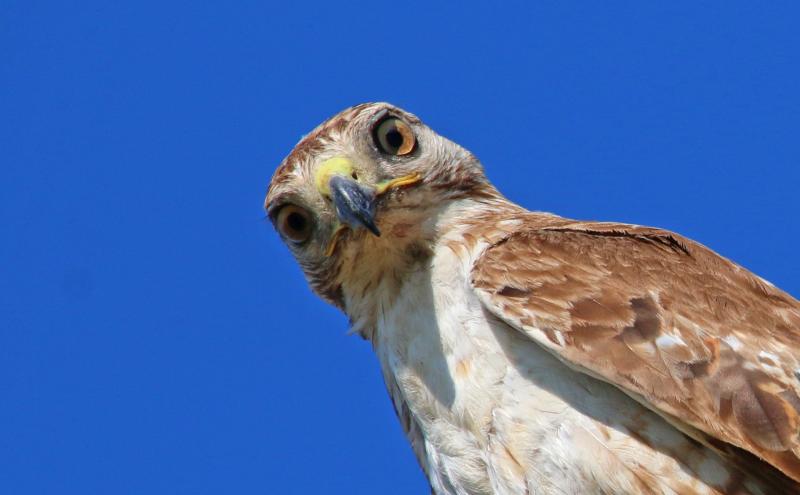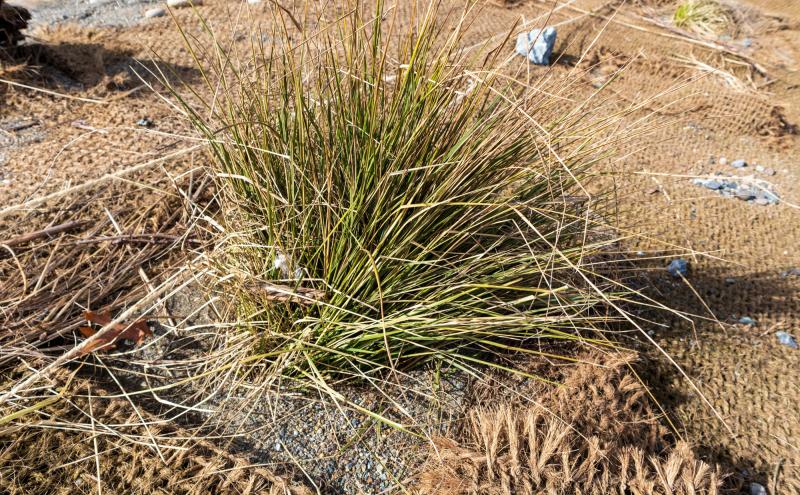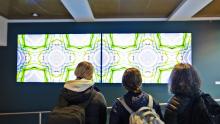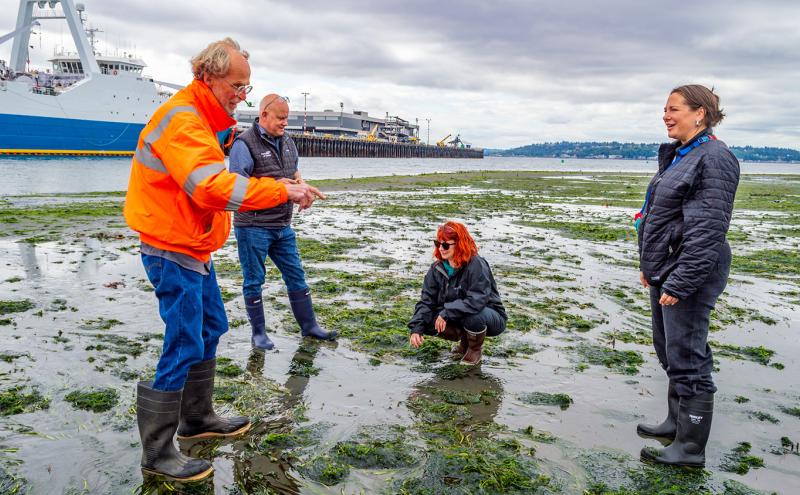
By Jack Winterhalter, Washington Sea Grant Hershman Fellow
The Port’s habitat team recently took advantage of one of the lowest tides of the year to walk the perimeter of the eelgrass enhancement area at Smith Cove, located between Pier 91’s cruise ship berth and Elliott Bay Marina. While exploring the conditions at the site and capturing footage with an aerial drone, the team took a closer look at many of the plants, animals, and algae that call Smith Cove home. Use these photos and information to hone your identification skills the next time you explore the intertidal zone.
Red Algae (Genus Gracilaria)
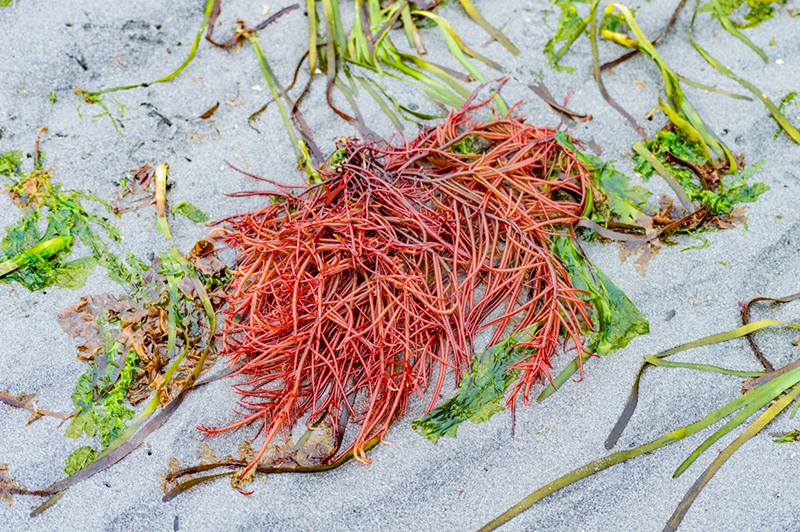
Species in this genus are tough to tell apart, but they share a lot of properties. Most notably, they contain the molecular components necessary to make agar, a jelly-like substance used as an ingredient in desserts, a thickening agent, an appetite suppressant, and even as a growth medium for microbiology experiments. Who knew all of that could come from seaweed?!
Moon Snail (Naticidae)
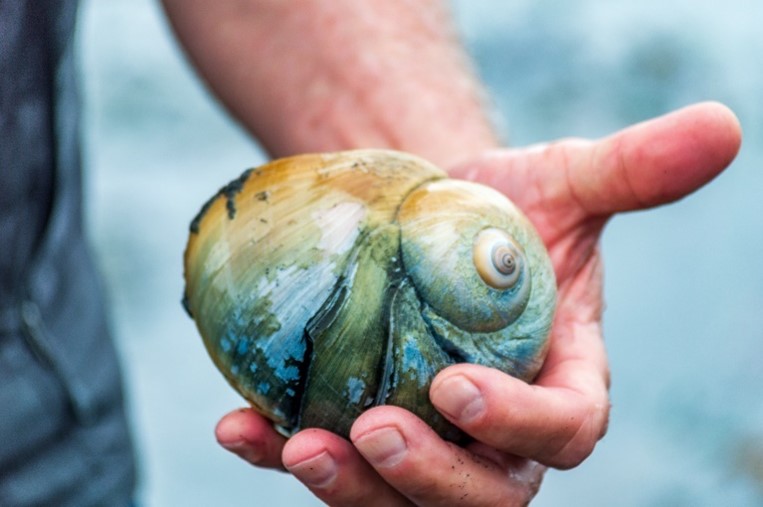
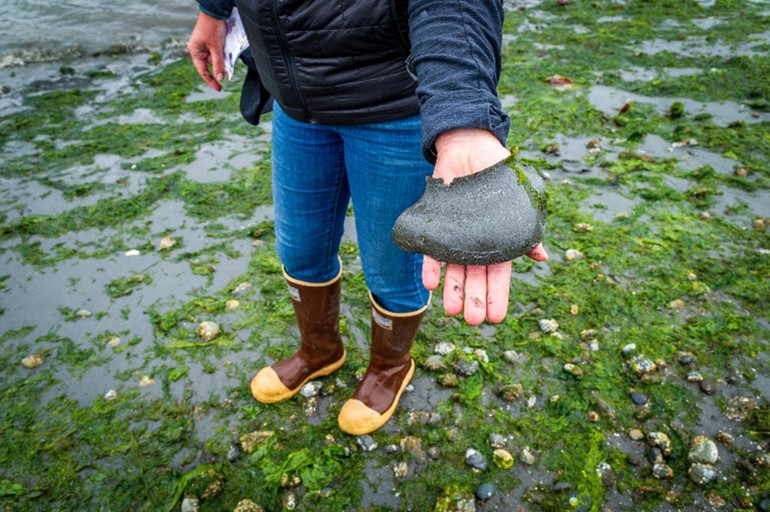
Behold the moon snail! The moon snail is the largest intertidal snail found in the Pacific Northwest, and it feeds on other organisms like clams by drilling holes through their shells. Even if you don’t spot a moon snail, you might find their famous egg cases, which are made of a mixture of sand and mucus ― also known as sand collars!
Hairy Chiton (Mopalia ciliata)
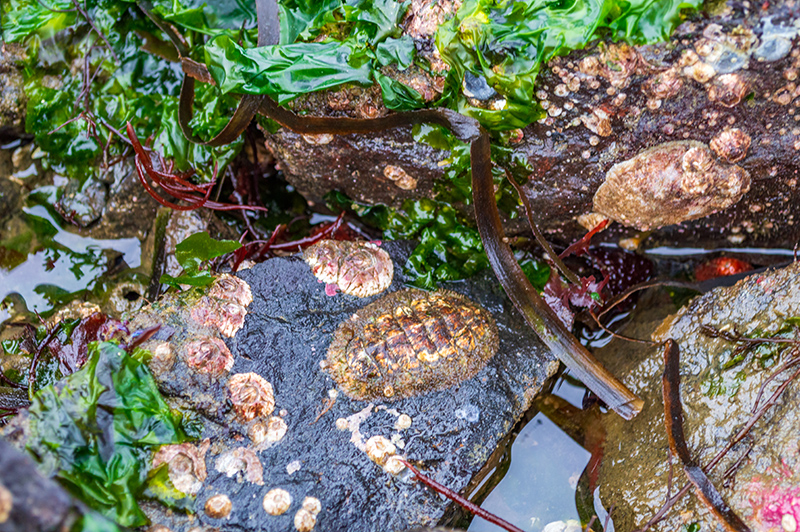
Chitons are a type of mollusk that protect themselves with armor composed of shells made of eight separate plates. These plates keep them safe from predators while they slowly traverse the landscape and feed on the algae growing on rocks.
Marine Worms (Phylum Annelida)

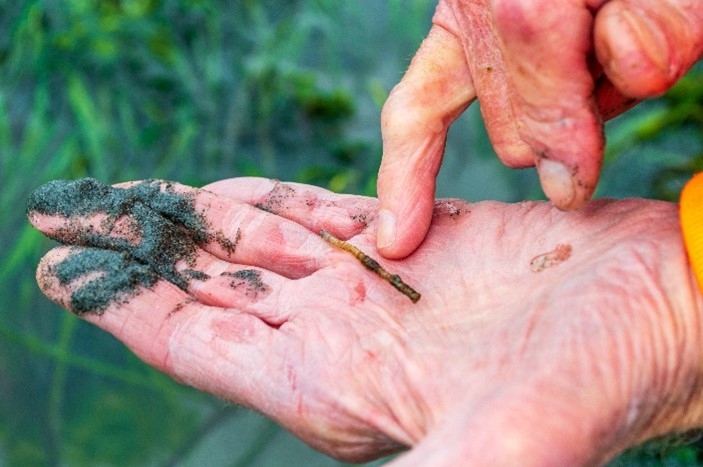
Just like in terrestrial soil, you’re sure to find some worms crawling around the intertidal zone. Marine-segmented worms of the phylum Annelida make up a crucial part of near-shore food webs and cycle nutrients through the ecosystem. Their burrowing activity even helps water and oxygen enter the sea floor. Some other types of worms can secrete tubes around their body for shelter and protection.
Mottled Sea Star (Evasterias troscheli)
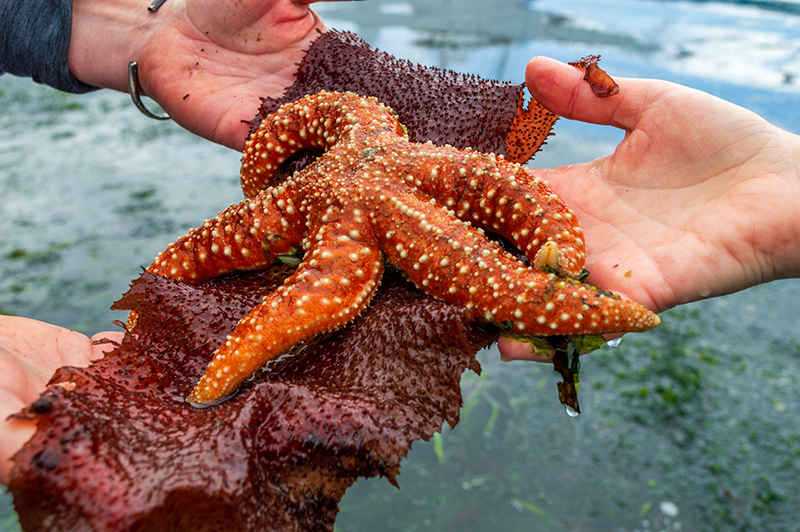
This five-armed friend feeds on clams and other bivalves. And its arms are strong enough to slowly pull them apart! This sea star, like most other sea star species, has the incredible ability to regenerate limbs that are eaten or damaged.
Behind the sea star is a type of red seaweed called Turkish towel (Mastocarpus). As its name suggests, the rough, bumpy texture of this species is reminiscent of the exfoliating towels used at Turkish bathhouses.
Porphyra (“Sea Laver”)

This red algae, commonly called “sea laver,” is one of the most cultivated sea vegetables worldwide and a great source of vitamin B12. In Japan, it is called nori and is used to wrap sushi!
Sea Lettuce (Ulva lactuca)

Sea lettuce grows across the globe and is eaten by many different organisms, including sea slugs, manatees, and even people! It is an ingredient in cuisines around the world and is commonly used in salads and soups.
Sugar Kelp (Saccharina latissima)
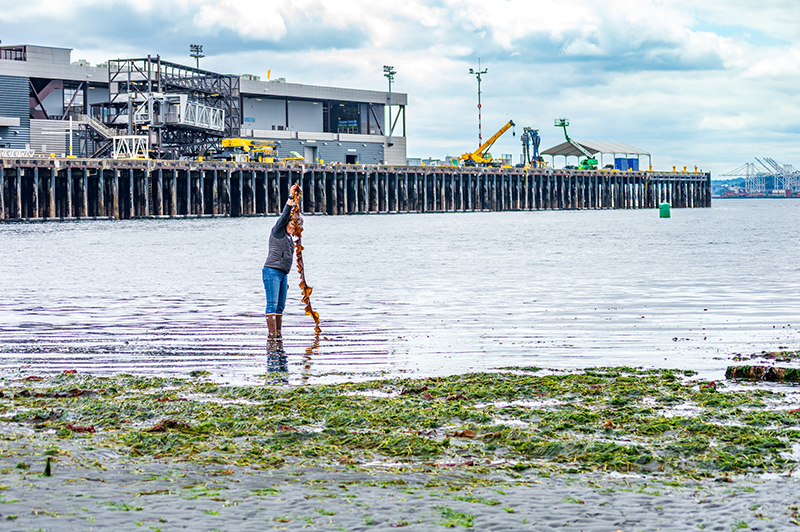
This long piece of seaweed is taller than the Port’s resident kelp expert, Kathleen Hurley. Each individual piece consists of one long blade attached to a rock via a root-like structure called a holdfast. It gets its name from a molecule called mannitol, which can be extracted from the kelp and used as a sugar substitute. However, you may be more familiar with its use in Japanese cuisine, known as kombu.
Eelgrass (Zostera marina)
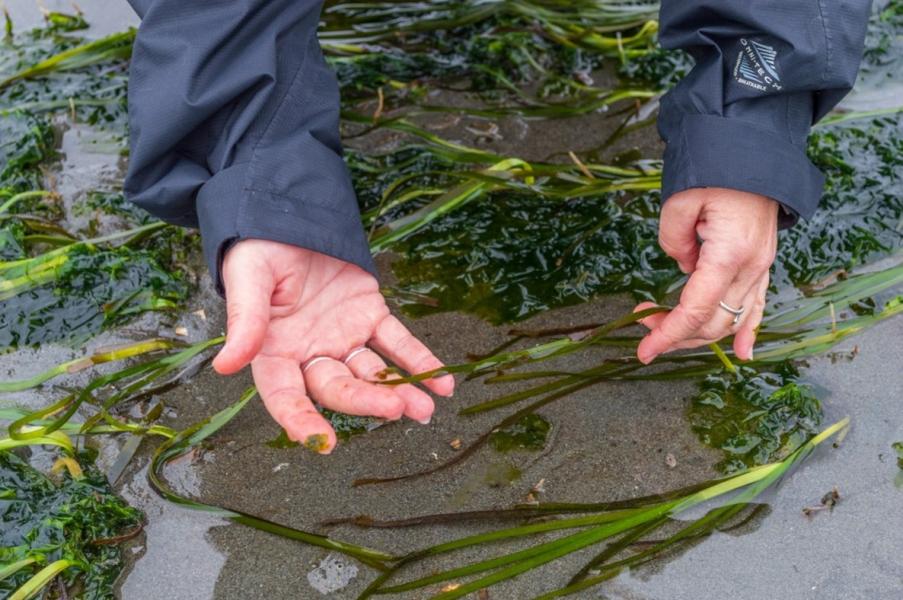
And last but certainly not least, these long green blades are called eelgrass (Zostera marina). Eelgrass is a flowering plant more closely related to terrestrial plants than to the seaweeds mentioned above. In addition to its ability to stabilize shorelines and sequester carbon, it acts as both a food source and shelter for many other marine organisms. Thanks to the habitat team’s work through the Smith Cove Blue Carbon Project, eelgrass density has increased in recent years at Smith Cove!
This is just a glimpse of the life you can find in the intertidal zones of Elliott Bay and Puget Sound. There’s much more to discover, so get out there and keep exploring! Remember: when visiting during low tide, move slowly, watch your step, and handle these special places with care to keep habitats healthy for everyone to enjoy.
Subscribe to Evergreen for environmental updates from the Port and SEA


